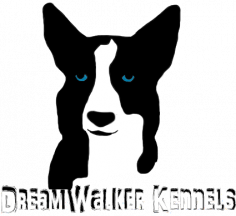
I have put a lot of thought into what my first blog post should be about and have concluded that this is perfect. I hope this guide will assist with whoever needs a guide and transitioning a sled dog into a house dog. This guide is for dogs who have been in the dog yard setting, who has actively been sled dogs. This guide is not for a dog who has just lived its life on a chain its whole life without stimuli. Sled dogs receive a lot more experience in different situations whereas a dog who has just spent its life on a chain can oftentimes result in a very ‘feral’ mindset when taken out of that environment.
Now, I do not have 10+ years of experience in the sled dog world, a matter of fact while I write this, I am coming up on year number 8. I have been in the animal care world since I was 16. I have worked around a few trainers, so I have well-based forms of training and like to consider myself a science-based in that realm. I wholeheartedly believe in working with and understanding the psychology of the dog on whatever you are wishing to accomplish with your dog and using that to build a relationship with your dog. So, while I am not technically a trainer, I have built this guide based on my beliefs. Please note that I am writing this from an unbiased view off of what I have witnessed working in multiple sides of the sled dog world.
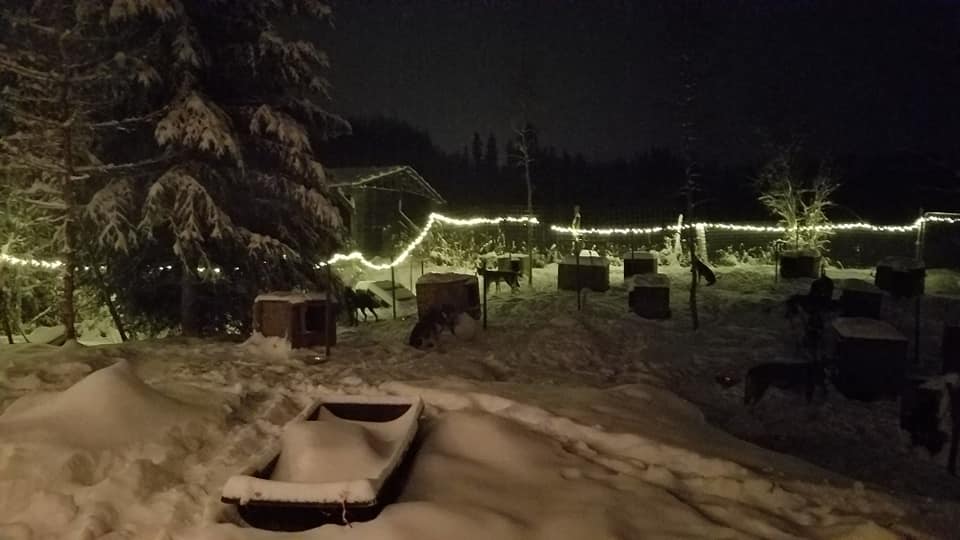
A Look Into A Sled Dog’s Life
For those who don’t know, a sled dog’s life is typically spent on a chain or in a pen surrounded by other dogs. While it might not seem communal, it very much is as they are surrounded by their buddies, and in my yard, I like to keep the chains long enough to where they can play effectively, but not allow for their collars to clip of course. In these settings, they typically sleep in dog houses with straw as well as have water buckets and food one to two times specifically a day. A sled dog should go on runs or exercise just about every day due to energy levels. Typically that happens through pulling a sled in the winter, ATV in the fall, and free runs in the summer. (Although not all people free run their dogs in the summer) These things give us a pretty general basis for a life of a sled dog. This is important for the next part.
Back To The Beginning
If you are lucky whomever you have received your dog from has had them in the house before, but for all intents and purposes for this article we will go based off of your typical dog turned into the shelter that is not keeping up with the team who is older and ready to take it slow. They just need to be taught house life and transitioned. Teaching a sled dog to be a house dog is much like going back to the beginning with a puppy. If these dogs have never been in the house, they have to be taught proper potty training, and typical house manners such as not being allowed to get into the garbage or get into things. The great news is, there are no fear or chewing stages!
In this guide, I will not go too much into depth on potty training, as there are multiple sources on this topic. Please note that any sources that mention shoving the dog’s nose or reprimanding for pottying in the house should be considered negligent as even if it did work on a puppy, it would absolutely NOT work for a dog that is older. A link for potty training can be found here. For male dogs who are newly neutered and may attempt marking, belly bands do wonders.
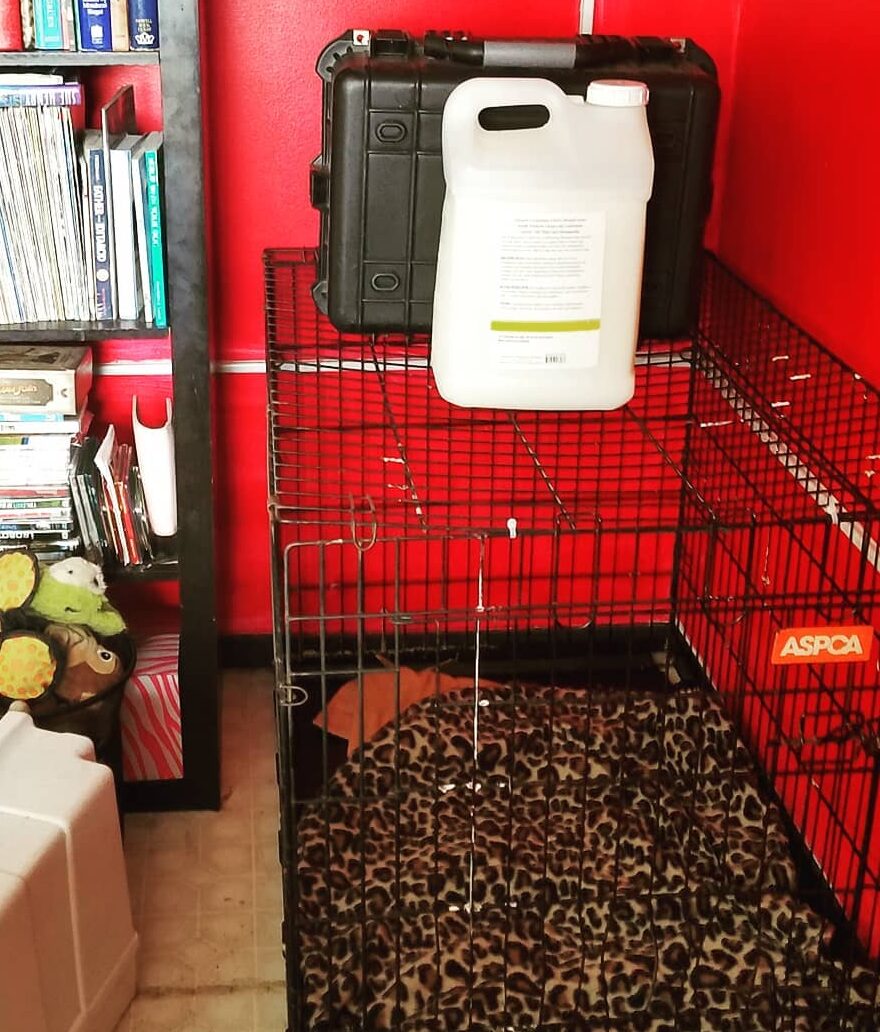
Two Simple Ways
There are two ways that I have found easiest to transition a sled dog indoors. We will call them Option A and Option B. The one thing in common with both of these methods is that it is best to have a crate, whether it is a wire or an airline kennel. Sled dogs are often put into a dog box when they are transported. They also live their life sleeping in a dog house. Small spaces they are able to call their own are perfect for allowing them to feel safe when they need to escape. It is best if you are able to cover the kennel with a thick blanket or kennel cover. Whenever you are not home, it is best for your new friend to be kenneled unless you are using option A as explained below. I have three kennels in my house that are set up and ready to be used whenever I have a dog who should come inside.
Option A
Option A is the easiest option in my opinion. All of my dogs know that my house is a great place to be, and I allow my dogs to take turns to come in, but that is because I have slowly transitioned certain dogs in at one point or another. If you simply create the area the dog was in, but at his or her new home it creates an easier transition. Now, you don’t have to drive a stake and purchase a swivel and post, unless you really want to. I have found that putting a chain around a tree or attaching the chain to the dog house, (this is very temporary so it isn’t around for long) and allowing the dog to get used to you for about two weeks can help. By doing this after two weeks, you can begin to bring the dog inside at night and crate them. (this is not typical crate training, but it does work) By doing this they learn the bedtime schedule and a basis for potty training at night but also learn that being inside isn’t so bad. When I do this I will throw treats in the kennel before putting them in so they get a reward for going into the kennel, but also they get a reward for being inside, therefor they see that it is a great thing.
By week 2 or 3 of doing this, the dog has learned that things aren’t so bad and life is pretty decent, allow the dog to spend an hour before bed in the house. At first, they may look super restless like Mr. Everest here, but they will get used to it pretty quickly especially if treats or even toys are involved.
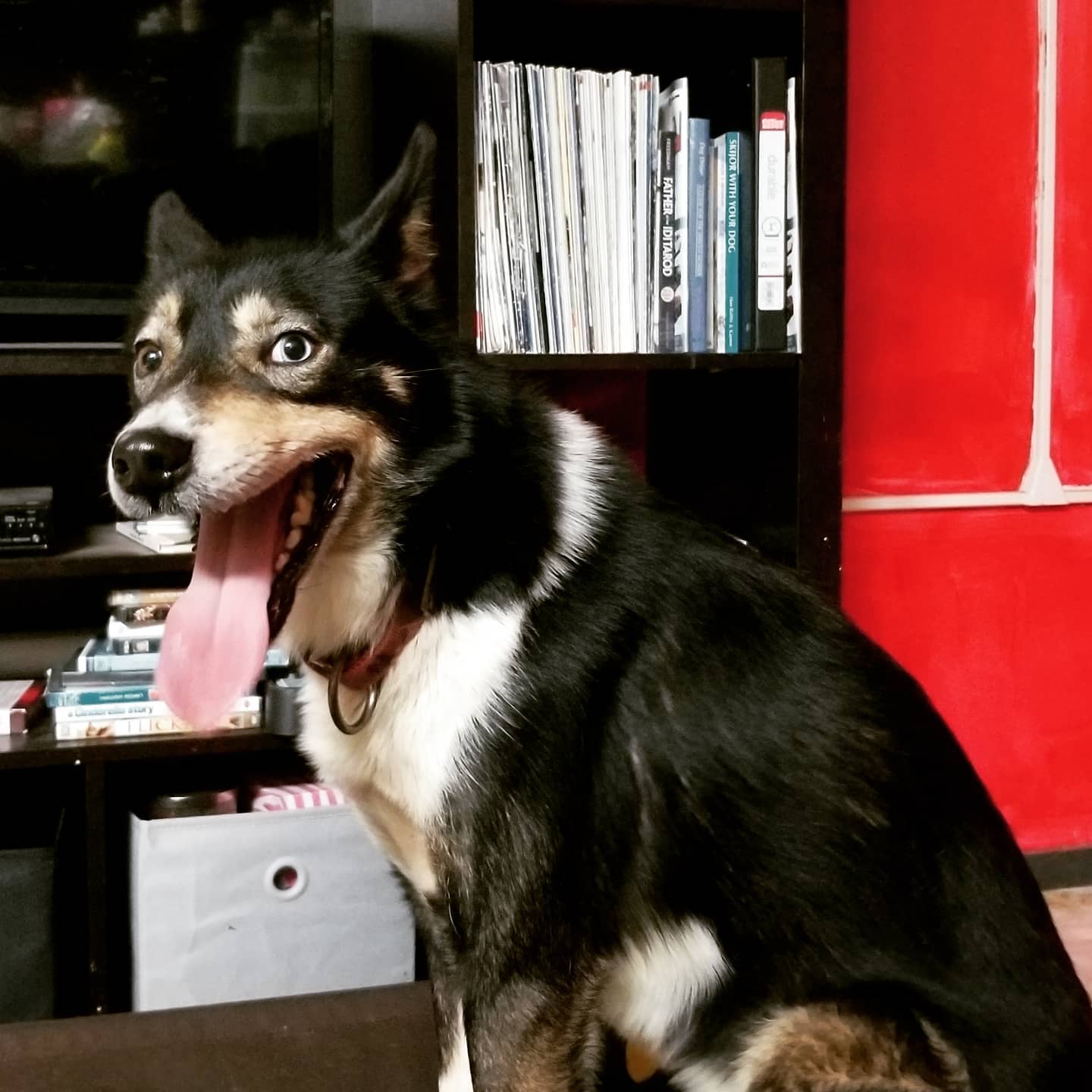
After about a week of doing this, you should see the dog start to relax. Each dog is different, so really take your time. If the dog transitions to the crate easily, you can always take away the dog house and chain earlier and allow them to go out to potty on your scheduled potty breaks. This often allows the dog to come around quicker. Eventually, you can take the crate away as you wish and work towards proper house manners. Older dogs pick up on things quicker than puppies.
Option B
Option B is pretty similar to option B, except without the house and chain step. Say you live in an apartment or a house where your landlord would murder you if you were to leave your dog outside for any period of time. In these situations, I tell people to go straight to the kennel. It is a harder process for the dog, but they tend to fare pretty well after they learn that being inside is not as scary as it seems. Remember that the kennel is their safe place, and if they choose to spend more time there than with you, it’s okay. They will come out on their own. Keep using treats and toys as a bargain. Eventually, you get to the point where your new friend is like the photo below where they are perfectly happy on a cot or sprawling out on a dog bed.
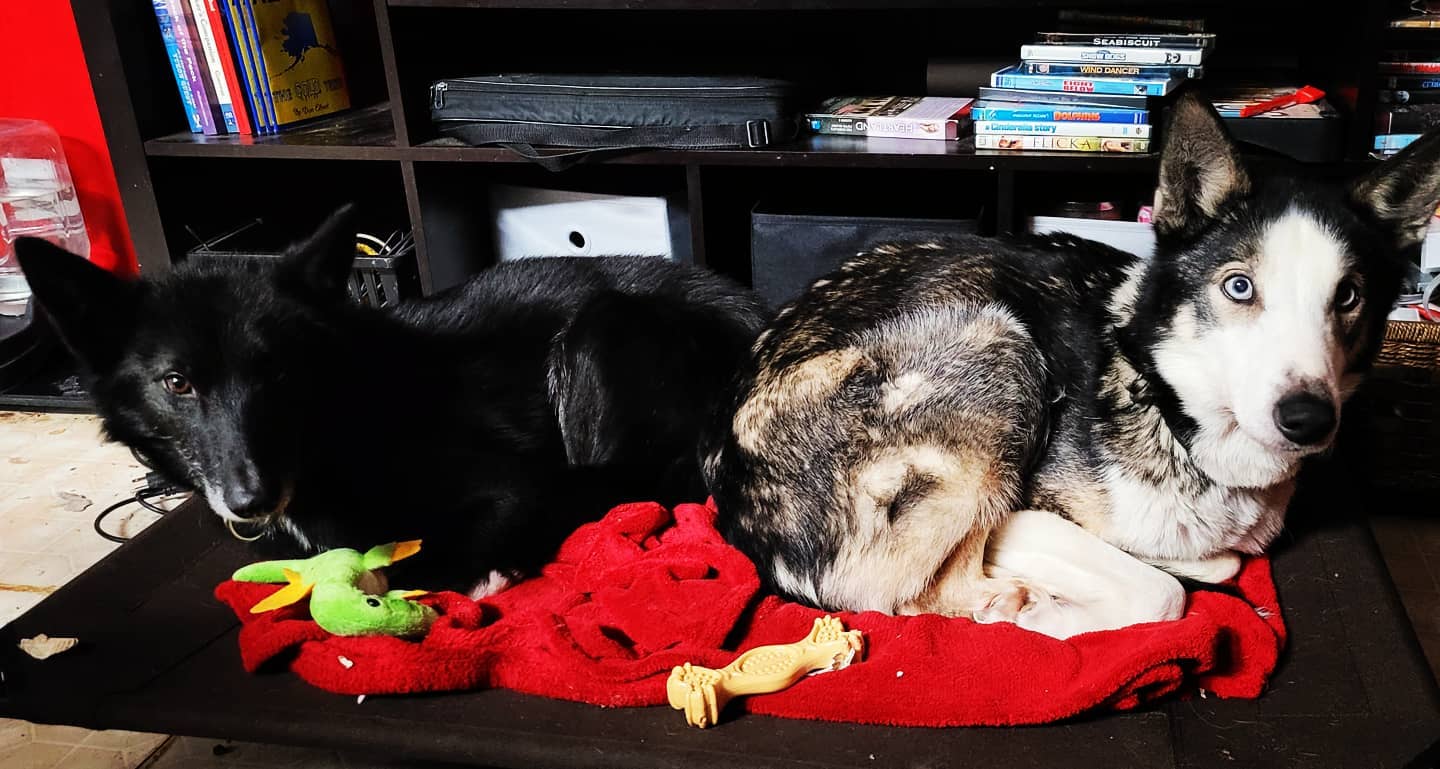
Additional Notes
There are a few additional notes id like to add about bringing a sled dog into your home. Treats are great. Sled dogs typically enjoy just about anything. Higher end treats would be liver paste, cheap hot dogs, canned food, and spray cheese. Believe it or not, sled dogs often times do like toys as well. Sled dogs being huskies have pray drives. Squeaky toys help a lot with that.
Off Leash
A lot of times sled dogs can be let off-leash. I would not do this until you are absolutely sure your dog will come back to you and is completely used to you and your routine. Even if you think you know your dog, give the dog at least a couple of months to adjust to you and your lifestyle. Helpful training links are as follows.
Other Possible Complications
Besides potty training, other complications can arise such as separation anxiety and lack of exercise requirements.
When a sled dog has lived its whole life in a dog yard, with multiple other dogs, often times the dog can suffer from separation anxiety when placed in a home without any other dogs. Signs of this type occur as the people of the house leave the house and the dog is left alone. While many folks may resort to a heavier-duty kennel, the root of the issue should really be resolved. The best result if you are dealing with this is working with a trainer in your area. In the Helpful Sources section below, I have included two training operations that I recommend here in the Fairbanks North Star Borough.
Sled dogs are working dogs. While the transition into a home environment is possible, it is extremely important that your new friend meets their exercise requirements. They have gone a life of running anywhere from 3 to 6 days a week, and while they are for sure most likely ready to slow down, they need a job. Whether that is a walk each day, running out in a field or your back yard, or your new friend encourage you to get into bikejoring, skijoring or even canicross. I tired or well worked dog, is a happy dog.
